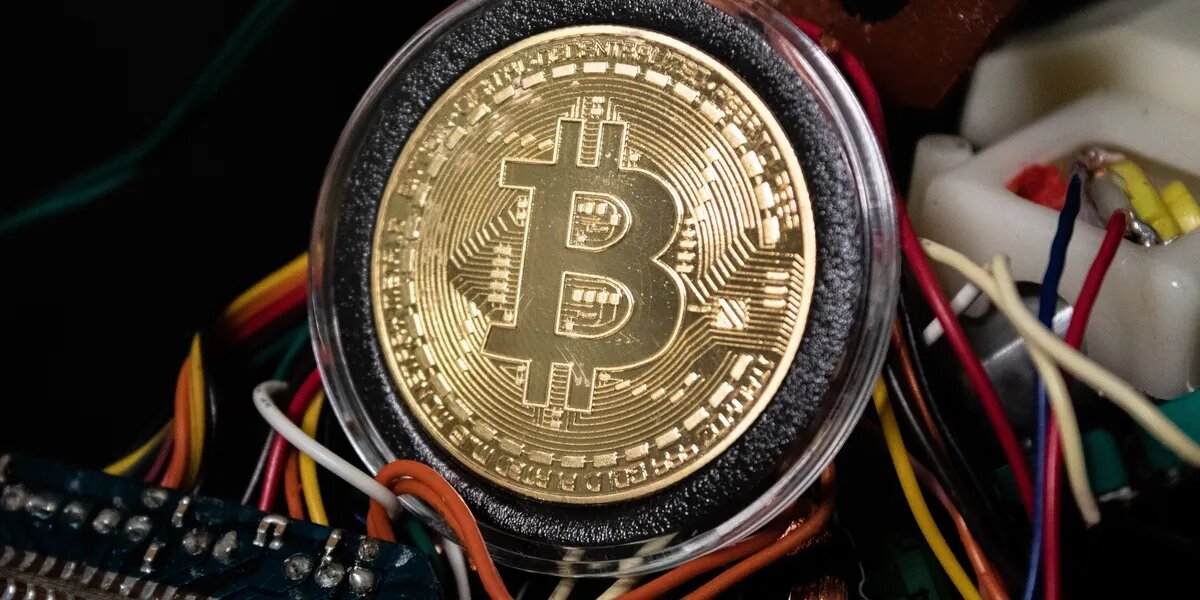As the popularity of cryptocurrencies continues to soar, many individuals seek ways to earn digital assets without significant financial investments. One avenue that has gained considerable attention is free crypto-mining platforms. These platforms allow users to mine cryptocurrencies without expensive hardware or extensive technical knowledge. Let's explore the world of free crypto mining platforms and provide a comprehensive evaluation to help you make informed decisions.
Understanding Crypto Mining
In the world of cryptocurrencies, mining plays a crucial role in securing and maintaining the integrity of blockchain networks. Crypto mining is the process by which new transactions are validated and added to the blockchain, ensuring the immutability and transparency of the digital ledger.
At its core, cryptocurrency mining involves solving complex mathematical problems using computational power. Miners employ specialized hardware, such as powerful CPUs (Central Processing Units) or, more commonly, GPUs (Graphics Processing Units), to perform numerous calculations in search of a specific solution. The mining process is resource-intensive and requires substantial computational power and energy consumption.
Mining is to validate and verify transactions. When a user initiates a transaction in a blockchain network, it is broadcasted to all participating nodes. Miners collect these transactions and group them into blocks. Each block holds a set of transactions and a unique identifier known as a hash.
To add a block to the blockchain network, miners should decipher a cryptographic puzzle known as the proof-of-work (PoW) algorithm. This algorithm requires miners to find a specific hash value that meets certain criteria, usually by repeatedly changing a nonce (a number used only once) until the desired hash is obtained. The mining process involves a trial-and-error approach, where miners continuously modify the nonce until the correct hash is found. Once miners discover the correct solution, they broadcast it to the network, and other miners verify its validity. If the solution is accepted, the new block is added to the blockchain, and the miner who found the solution is rewarded.
The reward for mining a new block varies depending on the cryptocurrency network. In the case of Bitcoin, the most well-known and widely used cryptocurrency, miners are rewarded with newly minted Bitcoins and any transaction fees associated with the transactions included in the block. The reward system incentivizes miners to invest their computational power and energy into the network's security and maintenance.
It is worth noting that the mining difficulty adjusts dynamically based on the total computational power of the network. This ensures that the average time it takes to mine a block remains relatively constant, regardless of the increasing or decreasing number of miners in the network. The difficulty adjustment mechanism prevents the blockchain from being flooded with blocks and maintains the stability and security of the network.
While Bitcoin mining is the most well-known form of crypto mining, numerous other cryptocurrencies have unique mechanisms. Some cryptocurrencies, like Ethereum, have transitioned from the PoW algorithm to a Proof-of-Stake (PoS) algorithm, where validators are chosen to create new blocks based on their existing stake in the network. This transition aims to reduce the energy consumption associated with traditional mining processes.
It is important to note that as cryptocurrencies have gained popularity, the computational power required for mining has increased exponentially. This has led to developing of specialized mining hardware known as ASICs (Application-Specific Integrated Circuits), designed specifically for efficient crypto mining. These ASICs are more powerful and energy-efficient than traditional CPUs or GPUs, giving miners with access to such hardware a competitive advantage.

The Appeal of Free Crypto Mining Apps
In recent years, the rise of cryptocurrencies has captured the attention of people worldwide. As a result, many individuals seek ways to participate in crypto and earn digital assets. Free crypto mining apps have emerged as a famous avenue for those who wish to explore cryptocurrency mining without making a significant financial commitment.
The appeal of free crypto mining apps lies in their promise of providing a simple and accessible entry point into the mining world. These platforms often claim to offer user-friendly interfaces and require minimal technical knowledge, making them attractive to newcomers to the crypto mining scene. By removing the need for expensive mining hardware and costly electricity bills, they allow individuals with limited resources to participate in mining activities.
One of the primary advantages of free crypto mining apps is the potential to earn cryptocurrencies without investing substantial capital. In traditional mining setups, miners must purchase specialized hardware, such as ASICs or powerful GPUs, which can be expensive. The electricity consumption required to power and cool these mining rigs can also significantly impact profitability. On the other hand, free mining platforms allow users to mine cryptocurrencies using the platform's infrastructure, eliminating the need for costly hardware investments.
Moreover, these platforms often support popular cryptocurrencies such as Bitcoin, Ethereum, or Litecoin, which have established themselves as leaders in the digital asset space. By allowing users to mine these well-known cryptocurrencies, free mining platforms tap into the desire to accumulate valuable digital assets without purchasing them directly from exchanges.
Another aspect that attracts users to free crypto mining apps is the potential for passive income. Mining cryptocurrencies can be a continuous process, with mining hardware running 24/7 to solve complex mathematical problems. With free mining platforms, users can take advantage of this continuous mining process without the hassle of managing their hardware or constantly monitoring the mining operation. This passive income potential appeals to individuals seeking additional revenue streams or those interested in cryptocurrency but needing more time or technical expertise to engage in active trading or investment strategies.
Additionally, free crypto mining apps often incentivize users to encourage their participation. These incentives can include referral programs, loyalty rewards, or bonus features that enhance the mining experience. Platforms aim to attract and retain users by offering these perks, fostering community and engagement within their ecosystem.
Evaluation Criteria for Free Crypto Mining Platforms
When considering free crypto mining platforms, it is essential to carefully evaluate several critical criteria to ensure their legitimacy, effectiveness, and overall user experience. Let's delve deeper into each criterion:
A. Transparency and Reputation:
Thoroughly research the platform and assess its transparency and reputation. Look for information about the company or individuals behind the platform, their experience in the crypto industry, and their track record. Check for previous user experiences or reviews that can provide insights into the platform's credibility and reliability. Transparent platforms often provide detailed information about their operations, including their mining infrastructure and team members.
B. Business Model and Revenue Generation:
Understand how the free mining platform generates revenue. While they claim to be free, it is essential to investigate their revenue model. Some platforms may generate revenue by taking a percentage of the mined cryptocurrency or displaying advertisements on their website or mining software. Assess the fairness and reasonableness of these revenue generation methods to ensure they align with your expectations.
C. Security Measures:
Security is of the highest significance when dealing with any cryptocurrency platform. Look for platforms that prioritize robust security measures. Features such as encryption protocols, two-factor authentication (2FA), and regular security audits indicate a platform's commitment to protecting user funds and personal information from potential cyber threats. Assess the platform's security practices and consider platforms with a solid reputation for maintaining a secure environment.
D. Mining Algorithms and Cryptocurrencies Offered:
Evaluate the mining algorithms supported by the platform. Different cryptocurrencies utilize various mining algorithms. For example, Bitcoin uses the SHA-256 algorithm, Ethereum uses Ethash, and Litecoin uses Scrypt. Check if the platform supports the cryptocurrency mining algorithm you intend to mine. Additionally, consider the range of cryptocurrencies available for mining on the platform. A broader selection of cryptocurrencies increases flexibility and potential profitability.
E. Mining Payouts and Withdrawal Options:
Review the mining payouts and withdrawal options offered by the platform. Determine the minimum payout threshold required to withdraw your earned cryptocurrencies and assess their reasonability and achievability. Additionally, consider the available withdrawal methods. Look for platforms that provide various options, such as direct transfers to cryptocurrency wallets or exchanges, ensuring flexibility and convenience when accessing your mined funds.
F. User Interface and Experience:
Assess the user interface and overall experience provided by the mining platform. A well-designed and intuitive interface can significantly enhance the mining process. Look for platforms with clear instructions, real-time mining statistics, and easy-to-navigate dashboards. A user-friendly interface can make the mining experience more accessible and enjoyable, especially for beginners.
G. Community and Support:
Consider the strength of the platform's community and the availability of reliable customer support. Look for platforms that have active social media channels, forums, or chat groups where users can share their experiences, ask questions, and seek assistance. A strong community fosters engagement and provides an avenue for learning and support. Additionally, prompt and helpful customer support ensures that any issues or queries are addressed promptly and efficiently.
Top Free Crypto Mining Sites
When exploring the world of free crypto mining, it is essential to identify reputable sites that offer reliable and secure mining services. While the crypto mining landscape is vast and continuously evolving, several platforms have gained recognition for their legitimacy and user-friendly interfaces.
Here are some of the top free crypto mining sites worth considering:
A. CGMiner:
CGMiner is a widely used open-source mining software for various cryptocurrencies, including Bitcoin. It provides advanced features and is compatible with ASIC, FPGA, and GPU mining.
B. BFGMiner:
BFGMiner is another open-source mining software that supports ASIC and FPGA mining. It provides features like dynamic clocking, monitoring, and remote interface capabilities.
C. EasyMiner:
EasyMiner is a user-friendly mining software that supports both CPU and GPU mining. It offers a graphical interface and features automatic detection of network devices.
D. Cudo Miner:
Cudo Miner is a multi-algorithm mining software that supports CPU and GPU mining. It is known for its simplicity and optimization features. While the basic version is free, there is also a paid version with additional features.
E. MinerGate:
MinerGate is a beginner-friendly mining software that supports CPU and GPU mining. It allows the mining of various cryptocurrencies and offers a user-friendly graphical interface.
F. NiceHash Miner:
NiceHash Miner is a mining software that utilizes your computing power for mining different cryptocurrencies. While the software is free, it connects to the NiceHash marketplace, where you pay fees for the rented mining power.
It's important to note that the profitability of mining depends on several factors, such as the cryptocurrency being mined, hardware specifications, electricity costs, and market conditions.
If you are mining Bitcoin and want to estimate your daily profit, use our Bitcoin mining calculator at PlasBit. It provides an overview of the estimated profit for miners based on various inputs. You can enter your mining hash rate, power consumption in watts, electricity cost in USD/kWh, and pool/maintenance fees as a percentage. Additionally, our mining calculator offers advanced options that allow you to consider hardware costs in USD, Bitcoin difficulty, Bitcoin price in USD, and the current Bitcoin block reward. It will calculate your return on investment in days, mining revenue, mining fees, electricity costs, Bitcoin mined per hour, and Bitcoin mined per day.
Additionally, some mining software may have developer fees or other limitations, so it's advisable to review the terms and conditions of each software before using them.
Conclusion
Free crypto mining platforms offer an enticing opportunity to earn cryptocurrencies without significant financial investments. However, it is crucial to exercise caution and evaluate these platforms thoroughly. Transparency, reputation, security measures, business models, mining algorithms, payout options, user experience, and community support are critical factors to consider when evaluating such platforms. It is crucial to store your mined cryptocurrencies in a secure environment. Our wallet utilizes offline storage, a vital security against theft or loss. Additionally, we distribute cryptocurrencies geographically by placing them in safe deposit boxes worldwide.
If the free crypto mining sounds too good to be true, it probably is. Avoid platforms that make unrealistic promises or lack transparency. Conduct thorough research, read user reviews, and seek advice from trusted sources before engaging with any platform. Ultimately, the goal is to find a reputable and reliable platform that aligns with your mining goals and provides a safe and rewarding experience in the ever-evolving world of cryptocurrencies.







